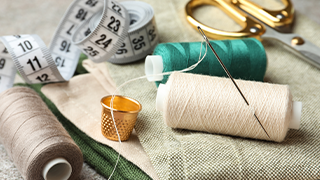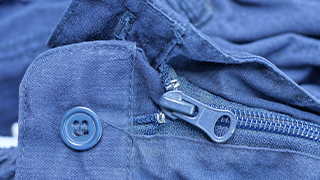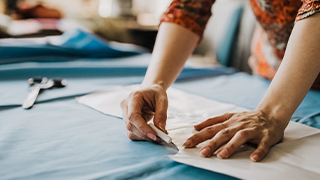Garment Construction
Garment Construction
Seams & Stitches
An understanding of how various stitches and seams work in constructing garments is essential. Apparel manufacturing uses about 30 stitch types and about 300 types of seams. A tremendous number of stitch and seam combinations thus are available for garment assembly.
T-Shirt Construction
Cutting T-shirts involves two separate processes:
- Cutting the fabric for bodies and sleeves
- Rewinding and bias cutting of fabric strips to be used for necklines (and, in some cases, sleeve bands)
Cut parts and trim are delivered to the sewing room with bundles of sleeves and bodies marked for matching during the assembly process. The major assembly steps are bottom hemming, shoulder closing, neck trim insertion, off-line sleeve assembly, sleeve insertion, and shoulder taping.
Jean Construction
Jeans require more pieces and assembly steps than do T-shirts. Cutting of the fabric is different, as denim is an open-width woven (rather than a tubular knit), and the fabric normally must be spread and laid in one direction only. The cut parts must be shade-matched and properly labeled. Assembly requires several off-line steps before the parts are joined into a pair of jeans.
Dress Shirt Construction
Dress shirts are complicated garments that use not only the base fabric for shirt construction but also auxiliary components, such as interlining and buttons. In order to manufacture a superior dress shirt with little variation, many of the construction processes are automated.


